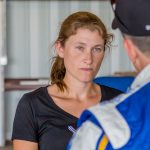SALISBURY – A virtual youth summit in Wicomico County this week provided local students with funding to support environmental projects.
The Ward Museum of Wildfowl Art, Salisbury University and community partners worked together to host the third annual Youth Environmental Action Summit (YEAS) on Wednesday. The summit provided a space for students to develop and present environmental action projects to a panel of experts and community partners in a bid for funding and guidance.
“It is such a powerful experience to see hundreds of students be so passionate about our environment,” said Eric Stewart, marketing and communication coordinator at the Ward Museum. “These students have worked for months to develop projects that have real potential to make an environmental difference in their communities.”
Eight action projects were submitted and student groups presented on local issues, earning a total of $1,900 in funding toward their projects. Teams from Snow Hill High School presented on the need for installing rain gardens on campus, the development of a wildlife habitat, and organizing a trash clean up on Assateague Island. According to Stewart, the “Wildlife Habitat Project,” presented by Makayla Fetters of Snow Hill High School, was awarded $200 to install birdhouses and a pollinator garden to increase specific native biodiversity on the school grounds. The “Rain Garden at Snow Hill High School” project, presented by Jerry Velasquez-Arreaga and supported by the school’s AP environmental class, will build on an existing garden space at the high school that floods. The group has carefully selected plants that will absorb water and provide unique habitat that is currently lacking. The project was funded at $270.
YEAS included 11 different environmental issue workshops throughout the day. Liz Wist of the Maryland Coastal Bays Program (MCBP) held a session that addressed the importance of pollinators and the role they play in environmental health.
“The summit embodies empowerment. It places the learning, brainstorming, collaboration, and decision-making into the hands of current students—our future leaders,” said Wist, education coordinator at MCBP. “I have had the privilege to attend each year, and I continue to feel humbled to be involved on such an impactful project.”
Stewart said $1,500 was awarded to student ambassadors who worked tirelessly to bring YEAS to life. Organized in part by the students who participated, this year, student ambassadors volunteered more than 350 hours in making the event a reality. Because COVID-19 prompted a virtual event, the summit was actually more accessible for some students.
“Any student in grades 3-12 can participate in YEAS,” said Aurelio Giannitti, education director at the Ward Museum. “They can work with a group of friends and put together a proposal or they can come without an idea for a project and meet students who they may collaborate with down the line.”
Stewart said students who attended the summit but did not have a project to present were encouraged to work together during breakout sessions to begin early stage planning of action projects they could work on throughout the year, or present at next year’s Youth Environmental Action Summit. In the coming months, the Ward Museum will present mini-grants to these student groups to aid in the development of their projects.

